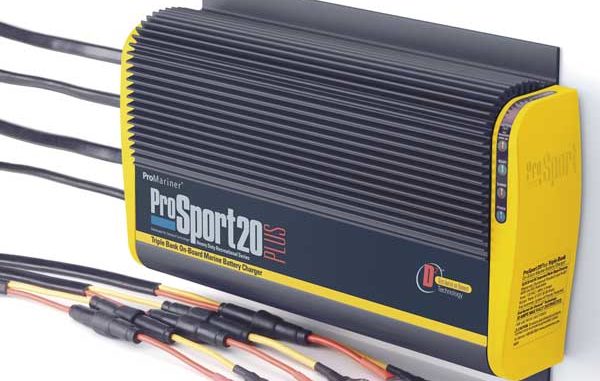
You’ll love the sweet music coming from the end of your line this month while fishing school specks in this Cocodrie hotspot.
Have you ever wondered why your trolling motor doesn’t run as long as you think it should between battery charges, or why your batteries don’t last as long as you expected? It could be that your batteries and charger just don’t get along.
Many fishermen and boaters think a 12-volt battery is fully charged when you get a reading of 12.0 volts between its positive and negative posts. Actually, the battery may be dead.
On average, a battery voltage reading of 12.8 or more can indicate a full charge, 12.6 a 75-percent charge, 12.4 a 50-percent charge, 12.2 a 25-percent charge and 12.0 or less is dead. The actual voltage numbers differ by battery brand and type.
Interstate battery literature shows 12.66 volts as a full charge for its flooded batteries, Trojan shows 12.75 volts as a full charge for its flooded batteries and Power Troll shows 12.6-12.7 volts as a full charge for flooded batteries, 12.85-12.95 for gel models and 12.8-12.9 for AGMs.
One charger with a single preset charging profile obviously can’t be considered optimum for all batteries. In fact, a charger set up to deliver a full charge to a flooded battery can overcharge and damage a gel battery.
A voltage higher than the desired full-charge voltage must be applied to a battery during the charging process, and this is where problems can creep in. Trojan lists a finishing voltage of 15.3-16.0 volts from a charger as optimum for its flooded batteries, 14.1-14.4 for its gel batteries and 14.1-14.7 for AGM models.
Deka recommends charging its gel batteries to at least 13.8 volts, but no more than 14.1 volts and its AGM models to at least 14.4 volts but no more than 14.6 volts.
In case this isn’t confusing enough, temperature also plays a part. Warmer ambient temperatures require higher charging outputs, and cooler temperatures require lower outputs. Most top-quality onboard chargers vary their output according to data from temperature sensors built into their cases or charging leads.
The number of amps you need from a charger is much easier to determine. The higher the charging amperage, the less time it takes to charge a battery, and a simple rule of thumb can keep you from overdoing it. Charge a battery at an amp rate equal to no more than 10-15 percent of its amp capacity, and you won’t hurt it. For example, a charger with a 10- to 15-amp output would be safe for a 100 amp-hour battery.
By now you’ve probably guessed that very few marine batteries get a perfect charge every time. You would have to visit your battery manufacturer’s web site or call its customer-service number to find out its ideal charging profile. Then, you’d have to do the same with the better charger manufacturers to find out which unit came closest to your batteries’ needs without exceeding them.
Not many people do this because it’s a heck of a lot easier just to buy a smart, automatic onboard charger labeled safe for your type of battery, and just leave it plugged in 24/7 when you’re not using the boat.
Chargers advertised safe for all battery types must be limited to charging profiles that are safe for gel batteries, and that means they aren’t likely to give AGM or flooded batteries a full charge. Chargers perfect for regular AGM batteries are too hot for gels and not quite hot enough for flooded batteries. Those set up for flooded batteries are probably fine for high performance AGMs but slightly too warm for regular AGMs and way too hot for gels.
Doing the research required to pick the right charger for your batteries ensures that you get to use their full storage capacity for a maximum number of years. With the price of gasoline skyrocketing, we need to get our money’s worth wherever else we can.


